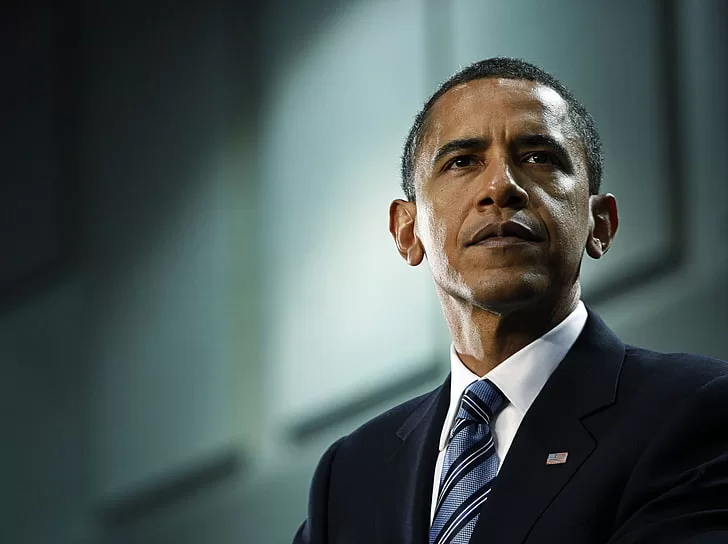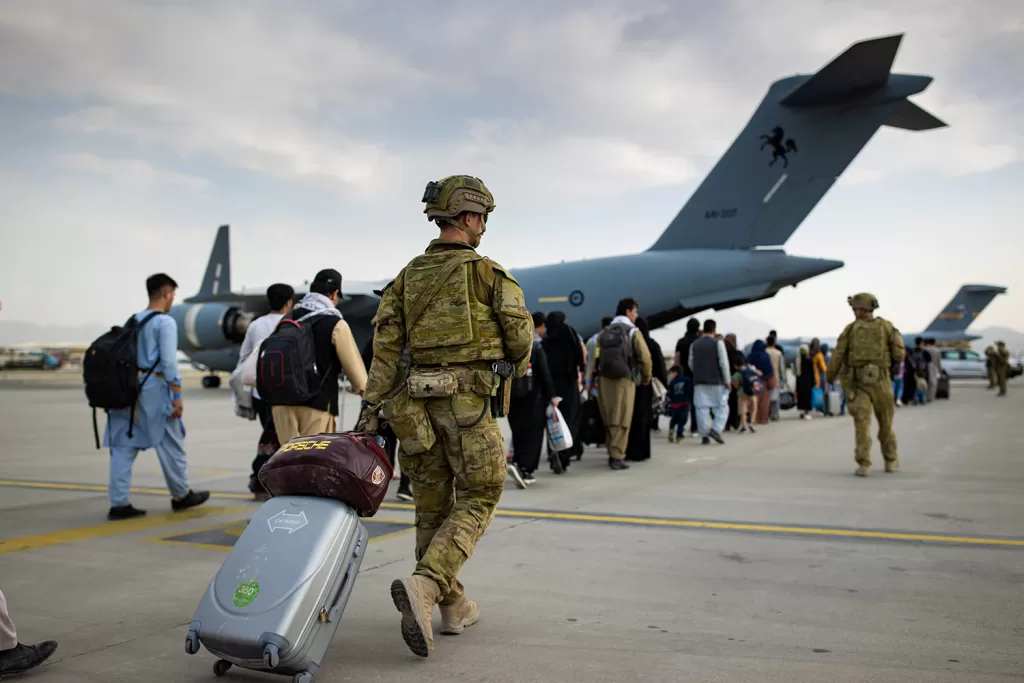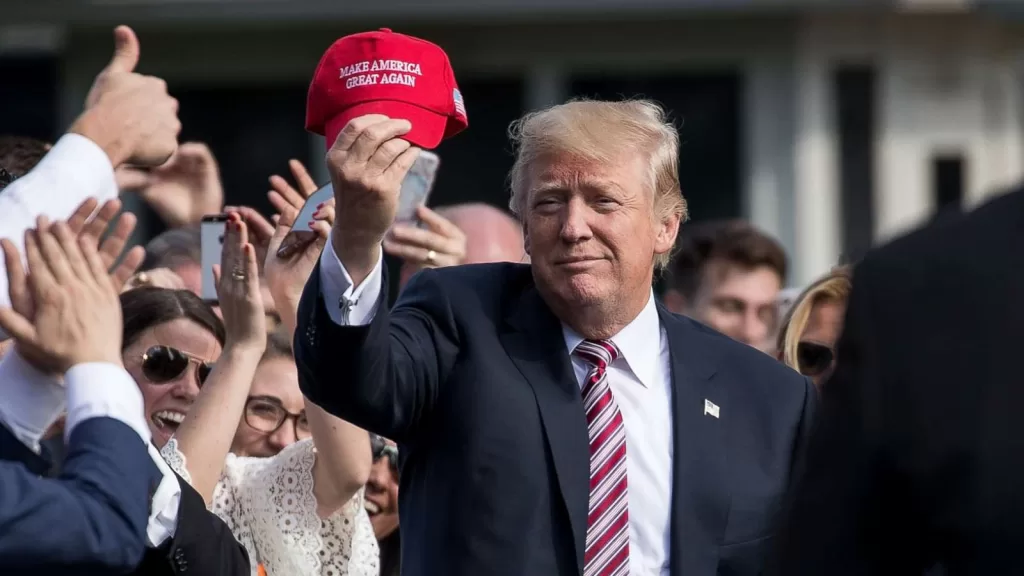Context
After a long and arduous negotiations, the US reached an agreement with the Afghan Taliban in 2020, which came to be known as Doha Accords. While the treaty was agreed on during the Trump administration, it was the Biden administration that abruptly decided to withdraw all forces from Afghanistan in 2021. In the aftermath off 9/11, US had launched a full-fledged military operation against the Mullah Omar led Taliban regime in Afghanistan, for providing refuge to the planner of the first strikes on American soil since Pearl Harbor, Osama bin Laden, and subsequently refusing to break ties with Al Qaeda (AQ).
Afghan Taliban’s closest ally at the time, Pakistan, was conveyed a stern message, “you are either with us or against us”. The then military ruler General Pervaiz Musharraf, who had overthrown the democratic government of Nawaz Sharif in 1999, considered it a god-sent opportunity to gain international credibility and getting on the good side of the US. Thus began the double game the nation was accused of, providing hinterlands to the Afghan Taliban in its tribal areas (previously FATA) while also allowing access to the NATO supply lines, running from Karachi to Afghanistan. This approach complicated matters domestically and provided stimulus to the growth of local militants, such as Tehreek-e-Taliban Pakistan (TTP). TTP began to strike security and military targets deep inside Pakistan while assisting Afghan Taliban to fight NATO forces.
Good Versus Bad Taliban
As the US launched an offensive in Afghanistan following 9/11, most of the Taliban and AQ leadership dispersed, ending up in Pakistan. And thus pressure built on the country to take military action against such elements. While initially reluctant, with military equipment and financial support from the US, Pakistan conducted a number of such operations in formerly FATA region to flush out the militants. This list includes Al-Mizan, Rah-e-Raast, Rah-e-Nijat, Zarb-e-Azb, and Rad-ul-Fasaad.
The nations participation in the campaign against extremism was marked by what came to be known as Good versus Bad Taliban. TTP was labelled as the Bad Taliban and Pakistan’s security forces would take military action against them – but would not act against Haqqani Network, a faction of Afghan Taliban. Haqqani Network were considered Good Taliban and concentrated their activities to fight NATO in Afghanistan. NATO and US security officials had consistently warned that this approach would one day backfire.
The US decision to negotiate a settlement with Afghan Taliban did not come easily. In fact, Pakistan had been conveying to the American counterparts from the get-go, the best approach to Afghan years’ long quagmire was to reach a negotiated settlement. The angry superpower was in no mood for any talks in the beginning and used its military and technological might to crush the rag-tag Taliban. In fact, every time Pakistan tried to make deals with local militant groups, which were attacking Pakistan’s security forces and supporting Afghan Taliban across the border, the leaders of these groups would end up dead at the hands of mysterious drone strikes.
The list includes the names of notorious leaders such as Hakimullah Mehsud and Baitullah Mehsud. When pushed by US authorities to act against militant groups in FATA, Pakistan officials reportedly would claim, ‘you Americans will leave one day but we have to live over here’. And obviously, the country always had its archenemy India in the back of its mind.

Reconcilable versus Irreconcilable
Up until 2009, the US under Obama was surging its forces in Afghanistan as the fighting escalated. On the other hand, overtime US strategic thinking towards the array of extremist groups operating in the region evolved into what was called the Reconcilable versus Irreconcilable groups.
Under this approach, local groups such as Afghan Taliban with local grievances were considered reconcilable. However, groups like AQ carrying global agenda, and responsible for 9/11 and attacks in other parts of the world, were deemed irreconcilable and terrorists. Thus, the military pressure against Afghan Taliban was to bring them to the negotiation table, while emphasis was on eliminating AQ and its leadership altogether. Under the Doha Agreement, Afghan Taliban agreed to break ties with whatever was left of AQ. Moreover, to prevent Afghan soil from being used for attacks against American allies. The language was vague about if allies included Pakistan.

PTI, Afghanistan, and TTP
Since US withdrew its forces from Afghanistan in 2021, there have been occasional attacks attributed to Daesh, but the country has largely been peaceful. This cannot be stated about its neighbor Pakistan.
PTI led government assisted the American departure from Afghanistan and exerted its pressure on Afghan Taliban to facilitate dialogue with the US. US position to negotiate with the Taliban aligned with what Imran Khan had propagated for a long time as the solution for the stalemate in Afghanistan. As the US left, the question of how to deal with Bad Taliban, such as TTP, became center stage for Pakistan.
The PTI government and the then military chief Qamar Javed Bajwa attempted to use negotiations and connections with the Afghan Taliban to reign-in TTP. As the foreign occupier had no more presence, it was hoped that TTP would suspend its activities as well. This is not how matters have turned out.
During the phase of talks with TTP, the situation remained relatively calm within Pakistan. However, as TTP presented its key terms, some of them were deemed dead on arrival. One of them being that Pakistan remove its forces from tribal areas and reverse the merger of FATA with the mainland. Moreover, it also emerged that Afghan Taliban while were promoting talks between the TTP and Pakistan but were unwilling to step further if TTP does not listen. Afghan Taliban did offer to relocate the militants from the border areas to other parts in Afghanistan. Thus, it appeared that relying solely on negotiations with TTP may not work.
As this was taking shape, another thorny issue also started to develop between the US and Pakistan. While the US had militarily vacated from Afghanistan, it committed to maintain over the horizon (without boots on the ground) pressure on the Afghan Taliban, and to prevent AQ and other extremists from regrouping. For this, reportedly it sought military cooperation with Pakistan, which the PTI government refused. PTI and its leader Imran Khan were highly sensitive to the steep toll the nation had paid in blood and treasure for its involvement in the campaign against terror.
From Negotiation to Military Operations
The elimination of Ayman al Zawahiri through a Kabul drone strike in July 2022 demonstrated that Afghan Taliban were not fully living up to their promises – and that US was maintaining over the horizon assault capabilities. Moreover, recent reports indicate collusion between TTP, Baloch insurgents and India, to counter CPEC.
Targeting of Chinese personnel working on CPEC related projects, accompanied by political chaos and economic meltdown that accompanied the removal of PTI government, complicated the challenge for the present civil-military establishment on how to deal with the threat posed by TTP. In other words, it was not just US seeking Pakistan’s assistance to maintain pressure on different brands of extremists, but now also China.
On June 23rd, Prime Minister Shehbaz Sharif announced Pakistan’s new counterterrorism operation, Azm-e-Istehkam (Resolve for Stability), to enhance the country’s efforts against terrorism and extremism. This initiative integrates kinetic military actions with non-kinetic measures, engaging all branches of the state.
Azm-e-Istekham’s represents a significant shift in Pakistan’s security strategy. It recognizes that policies that accommodate extremists through peace dialogues and supporting the Afghan Taliban’s return to power have proven detrimental. The military has announced that, in addition to small-scale operations targeting traditional terrorist groups, it will also take action against political dissenters especially those labeled as “digital terrorists” for spreading anti-military sentiments on social media.

Azm-e-Istekham and Pakistan-China Ties
The launch of Azm-e-Istekham is widely seen as Pakistan’s last-ditch effort to address growing Chinese security concerns regarding the safety of its 29,000 citizens in Pakistan, including 2,500 working on the $62 billion CPEC projects. Pakistan’s failure to mitigate the vulnerability of Chinese personnel and infrastructure, which have been targeted in recent terrorist attacks, has tested China’s patience and its reliance on Pakistan as an effective security provider.
Frustrated by the political instability and volatile security situation in Balochistan and KPK, where over half of the CPEC projects are located, China has gone so far as to demand that Pakistan hand over security to Chinese forces, hinting at the possibility of establishing a Chinese military base on the Arabian Sea shores near Gwadar Port.
Pakistan cannot afford to allow Chinese military bases on its soil, as this would severely compromise its reputation as a sovereign nation and undermine the credibility of its military. Additionally, this would be seen as a highly threatening escalation as it relates to the great power rivalry.
Last month, Prime Minister Sharif and military chief Asim Munir made a five-day trip to China to reassure the Chinese government of their commitment to providing security. This visit was followed by Senior Chinese official Liu Jianchao’s trip to Pakistan, during which he strongly expressed Chinese concerns about Pakistan’s political instability and deteriorating security situation, emphasizing the need for political consensus and enhanced security measures. Through Azm-e-Istekham, Pakistan is taking a gamble to regain China’s trust and demonstrate its capability to manage the situation before China resorts to more assertive actions.
Azm-e-Istehkham and US-Pakistan Ties
The Azm-e-Istehkham operation capitalizes on the shared interests between US and Pakistan towards combating extremism. For Pakistan, the operation would reinvigorate counterterrorism cooperation with the US. Demonstrating support for this new initiative, the US expressed its intention to establish high-level counterterrorism dialogue, including funding robust counterterrorism capacity-building programs, and supporting a series of US-Pakistan military-to-military engagements.
Azm-e-Istehkham consists of three components: doctrinal, societal, and operational. Work is already being done on the first two phases, and the third phase is set to be implemented soon, contingent on the delivery of sophisticated small arms and communication equipment.
U.S. has delivered limited support to Pakistan’s law enforcement agencies. Last year, US Ambassador to Pakistan, Donald Blome, had announced an $8 million package to upgrade the anti-terrorist police force in Balochistan.
It is highly likely that the US, which renewed its defense pact named Communications Compatibility and Security Agreement (COMCASA) with the country last year, will provide additional military aid to help Pakistan combat terrorism. This would be the reflection of President Biden’s renewed interest in Pakistan. In his letter to Prime Minister Shehbaz in March he expressed Washington’s desire to renew partnership with Islamabad to tackle pressing global and regional challenges.
US Elections and Azm-e-Istehkam
In the grand scheme of things, the withdrawal of US forces from Afghanistan in 2021 was based on a thinking portrayed by former president Donald Trump. He wanted to focus on the US more – calling it Making America Great Again (MAGA). In Europe, he stressed NATO to pay more for its defense needs if it desires American security guarantees. And in Afghanistan, it was the evolution of the strategy: what could be militarily done was achieved, by weakening and dismantling AQ, and thus a political solution was needed. Moreover, it was a realization that war against extremism had distracted it from dealing with global rivals, China and Russia.
In Pakistan, the reverse appears to be occurring. While it favored political solution in Afghanistan, it is turning to a kinetic approach when it’s in a least favorable position to do so – economically and politically, and without much needed public support. From the conditions TTP presented it’s clear it aspires for a space from where to extend their reach. Moreover, how TTP wants to achieve these demands, i.e., through terrorism – as compared to negotiations, needs to be transformed. To change the way TTP is going about its demands will require a change in Afghan Taliban thinking first. While Afghan Taliban were fighting foreign troops, there is no such validity in case of TTP – as it relates to Pakistan. TTP using the argument that it seeks to implement Sharia does not garner much merit. To alleviate the source of TTP’s appeal requires integration of FATA into the mainstream while improving the infrastructure and economic wherewithal of the areas involved. Moreover, to empower groups like Pashtun Tahafaz Movement (PTM) in helping to bring the disgruntled towards political inclusion and addressing grievances.
While the Biden administration has been supportive of the present regime in Pakistan, Trump may take a different approach. Trumps foreign policy, also reflected by the selection of VP nominee JD Vance, would be to appease Russia and end the Ukraine conflict, as they’ve already stated. The key emphasis would be to dent the China-Russia strategic ties. In the Middle East, Trump will likely pick up the Abraham Accords from where it was interrupted, due to the October 7 attack by Hamas on Israel. This would mean recognition of not only the two-state solution, but also Israel, and going hard against Iran.
In South Asia, Trump is likely to exert pressure on both India and Pakistan to counter China. Any anti-terror campaign will be seen through this lens – and the emphasis will likely be more on India oriented militants. In his previous term, Trump had even talked about facilitating the resolution of the issue of Kashmir between India and Pakistan.
PoliTact’s South Analyst Naad-E-Ali Sulehria contributed to this article.





